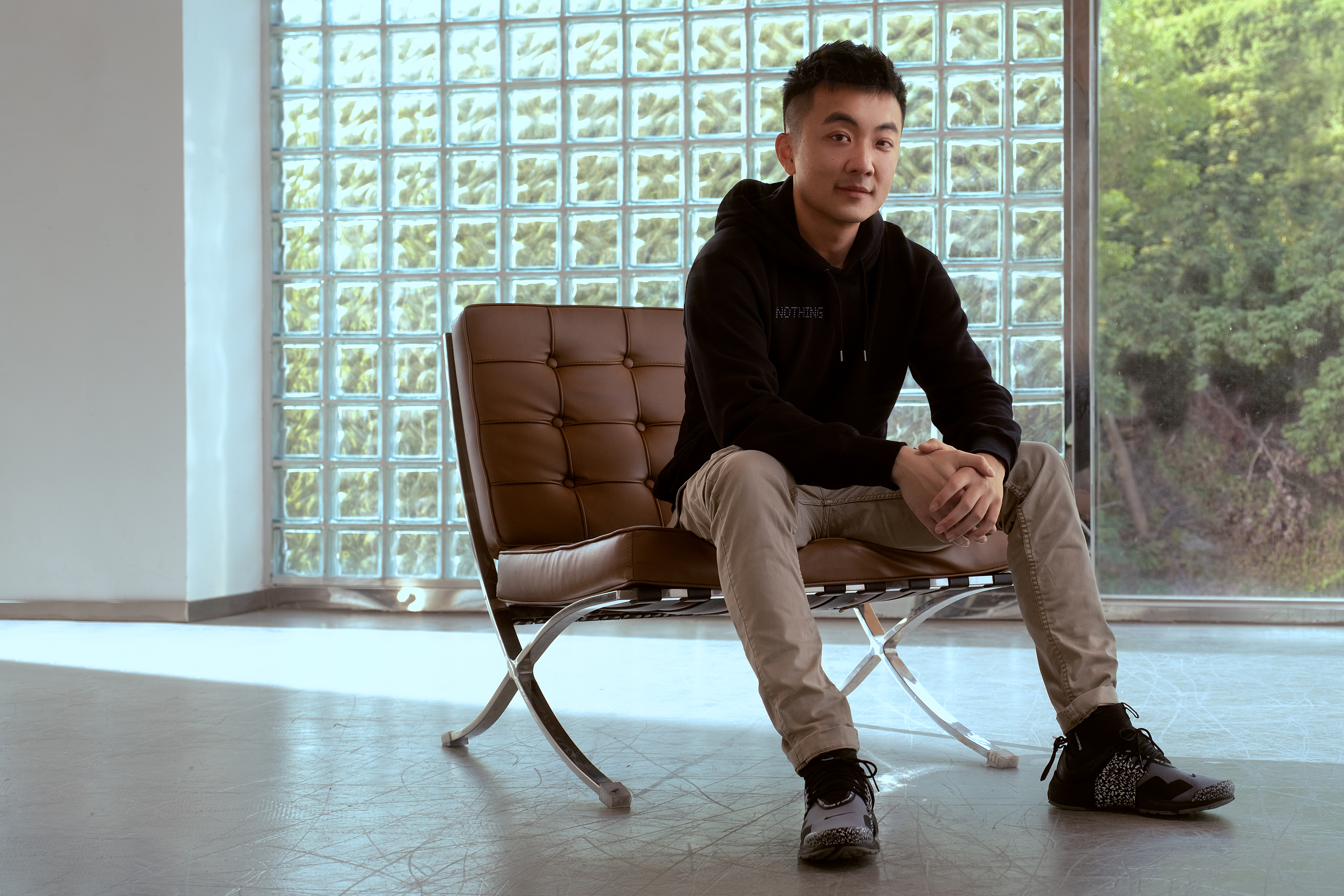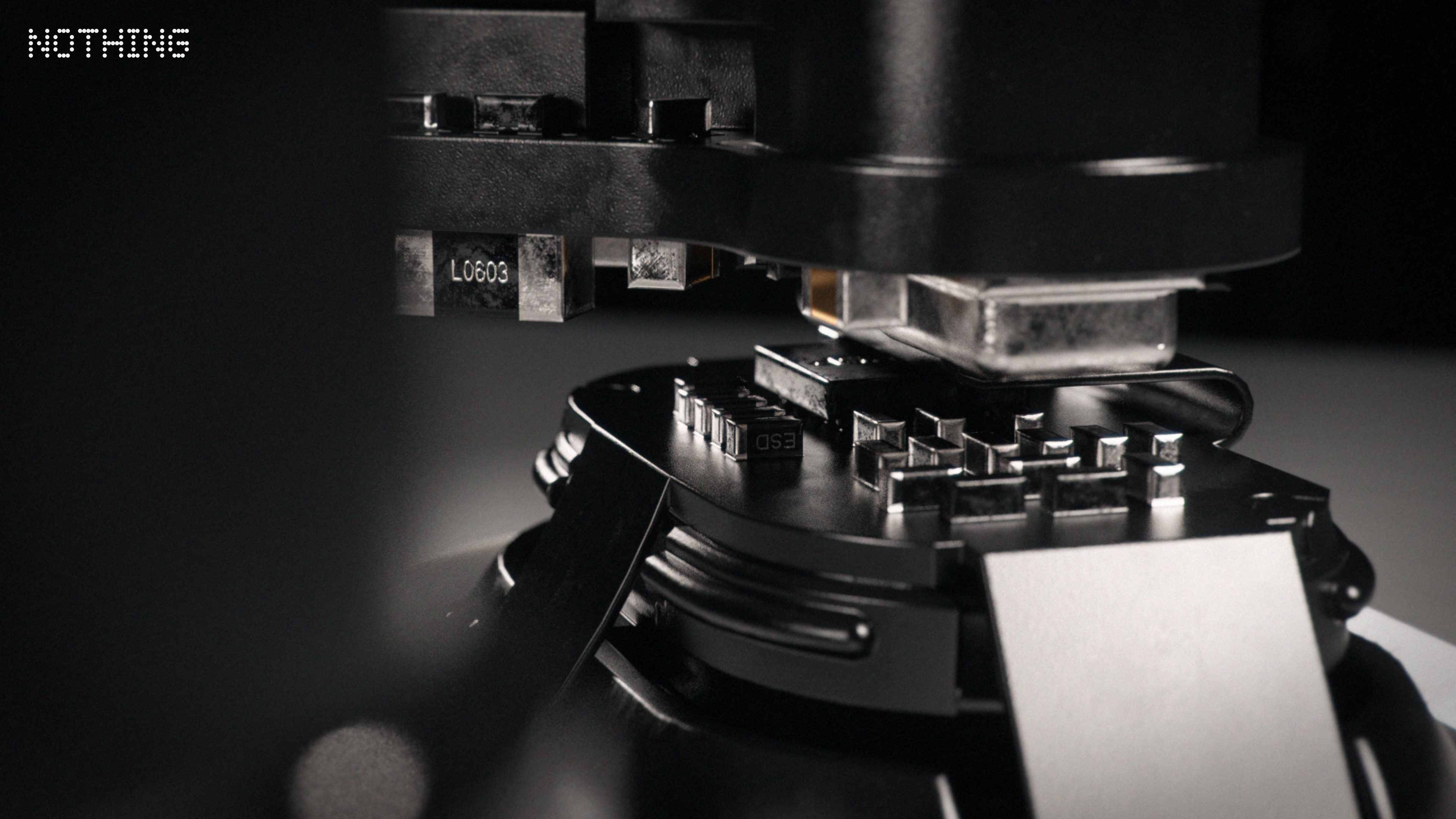On July 27, hardware maker Nothing will debut its first product, wireless earbuds dubbed Ear (1). Despite releasing almost no tangible information about the product, the company has managed to generate substantial buzz around the launch — especially for an entry into the already-crowded wireless earbud market.
The hype, however, is real — and somewhat understandable. Nothing founder Carl Pei has a good track record in the industry — he was just 24 when he co-founded OnePlus in 2013. The company has done a canny job capitalizing on heightened expectations, meting out information about the product like pieces in a puzzle.
We spoke to Pei ahead of the upcoming launch to get some insight into Ear (1) and the story behind Nothing.
TC: I know there was a timing delay with the launch. Was that related to COVID-19 and supply chain issues?
CP: Actually, it was due to our design. Maybe you’ve seen the concept image of this transparent design. It turns out there’s a reason why there aren’t many transparent consumer tech products out there. It’s really, really hard to make it high quality. You need to ensure that everything inside looks just as good as the outside. So that’s where the team has been iterating, [but] you probably wouldn’t notice the differences between each iteration.
It could be getting the right magnets — as magnets are usually designed to go inside of a product and not be seen by the consumer — to figuring out the best type of gluing. You never have to solve that problem if you have a non-transparent product, but what kind of glue will keep the industrial design intact? I think the main issue has been getting the design ready. And we’re super, super close. Hopefully, it will be a product that people are really excited about when we launch.
So, there were no major supply chain issues?
Not for this product category. With true wireless earbuds, I think we’re pretty fine. No major issues. I mean, we had the issue that we started from zero — so no team and no partners. But step by step, we finally got here.
That seems to imply that you’re at least thinking ahead toward the other products. Have you already started developing them?
We have a lot of products in the pipeline. Earlier this year, we did a community crowdfunding round where we allocated $1.5 million to our community. That got bought up really quickly. But as part of that funding round, we had a deck with some of the products in development. Our products are code-named as Pokémon, so there are a lot of Pokémon on that slide [Ed note: The Ear (1) was “Aipom.”]. We have multiple categories that we’re looking at, but we haven’t really announced what those are.
Why were earbuds the right first step?
I think this market is really screaming for differentiation. If you look at true wireless today, I think after Apple came out with the AirPods, the entire market kind of followed. Everybody wears different clothes. This is something we wear for a large part of the day. Why wouldn’t people want different designs?
We’re working with Teenage Engineering — they’re super, super strong designers. I think true wireless is a place where we can really leverage that strength. Also, from a more rational business perspective, wireless earbuds is a super-fast-growing product category. I think we’re going to reach 300 million units shipped worldwide this year for this category. And your first product category should be one with good business potential.
“Screaming for differentiation” is an interesting way to put it. When you look at AirPods and the rest of the industry, are aesthetics what the market primarily lacks? Is it features or is it purely stylistic?
If we take a take a step back and think about it from a consumer perspective, we feel like, as a whole, consumer tech is quite, quite boring. Kids used to want to become engineers and astronauts and all that. But if you look at what kids want to become today, they want to be TikTokers or YouTubers. Maybe it’s because technology isn’t as inspiring as before. We talked to consumers, and they don’t care as much as a couple of years ago either. If you look at what what brands are doing in their communication, it’s all about features and specs.
If you look at Tesla, they’re trying to accelerate mankind’s adoption of renewable energy. And making a vehicle is just one step on the way to get there. Similarly, putting their patents out there for everybody to use also helps them with their mission. Within consumer tech, it doesn’t feel like there are a lot of companies like that anymore. I think product is one part, and the user experience is another. How can we get all these technology devices around us to connect more seamlessly with each other — but also, as a brand? Can we get people to be more optimistic about technology again? That’s kind of the field we’re playing in.

Is it anything as big as, like you said, “accelerating mankind’s adoption of renewable energy,” per Tesla? Are you speaking specifically about concepts like connectivity or ecosystem?
I think we want to connect all these devices around us. We have tons of technology products, and each product even has its own app. So if you have 10 different products, you have 10 different apps on your phone. That’s not a great user experience. Why does it have to be this way? I think that if we can make a person’s digital life more seamless, that’s a big step toward our mission of creating this seamless digital future.

Companies like Apple, Samsung or Huawei start with the phone as the centerpiece. That strategy makes sense, as the phone is the hub. Are you working backward toward that to some degree by starting with earbuds?
We’re starting with smart devices. Ear (1) is our first device. I think it has good potential to gain some traction.
Did you feel you couldn’t have executed your strategy for Nothing while at OnePlus?
I spent a lot of my 20s at OnePlus. I learned so much there. This vision started for me after leaving. I started talking to some friends and other entrepreneurs, and I saw a lot of these ideas were floating around. These casual chats were how we got our seed financing late last year.
You were talking to people, the seed came in and that solidified it as a company.
Yeah, it wasn’t like a clear vision from the beginning. And to be honest, I think it’s still an iterative process where me and the team are still discussing it.
Your funding is at around $23 million. Is that right?
That’s the funding we’ve announced.
Is GV the top investor?
GV is the only investor in the Series A. And by amount, they’re number one.
There are a lot of players in wireless headphones right now. Have you been getting pushback that the market is oversaturated?
We’ve just focused on being ourselves. When we were brainstorming early on about what to make, we asked ourselves: How do we create the best possible product? This is probably our third or fourth design. We scrapped a couple of designs. A pivotal moment was when the founder of Teenage Engineering asked a question like, “Hey, guys, are we making a product that [we would buy] if we were consumers walking into a store?” When that answer was not a clear, “yes,” clearly we had to change the design even if it meant delays or increased cost. I think we’ve been very, very inwardly focused and trying to create products that are not only exciting but also something that we would want to recommend proudly to our close friends and family.
https://www.instagram.com/p/CQybTlNLTdM/?utm_source=ig_web_copy_link
How does pricing factor into your strategy with these products?
First of all, we just try and create the best possible product that we will be proud to share with other people. It’s going to have leading features like noise cancellation and great build quality. And because we’re primarily focusing on online sales channels, we are going to be able to [make it] — I wouldn’t say “affordable,” but quite a fair price.
With the Ear (1), it’s a much more costly design to realize than a standard, nontransparent design. I think it’s going to be a good price point at US$99, €99 and £99. Featurewise, it’s similar to the AirPods Pro, but the AirPods Pro is $249. There are a few no-name products that are cheaper, but of dubious quality.
You’ve been aggressive with news releases, but it’s one thing to get this in front of journalists and another to get it in front of customers. What does that process look like?
We have already lined up a lot of great sales partners, and we’re in the process of lining up more. So when that day comes, there’s going to be a lot of availability. We’re looking to target an audience that’s creative, and more conscious of designs and trends. We’ll be working with the right people in those spaces and in the right sales channels to reach these people as well.
Which markets are you targeting initially?
The main markets are going to be the U.K., India, Europe and North America, followed by Japan, Korea and several other countries that we’re still in the midst of negotiating.
You’ve spoken a little about the Essential IP acquisition. Is any of that going to wind up in this first product?
No. Before we were called Nothing, “Essential” was one of the names we were brainstorming internally. That’s why we acquired the trademark. We don’t have any plans to do anything with Essential [ … ] That word really resonates with us, but we thought that Nothing would be our own baby instead of a continuation of somebody else’s.
So what does “Nothing” mean to you?
It means focus on the right things. Products are a delicate sequence of trade-offs. There are trade-offs at every corner. How can you make the right trade-offs to deliver the best possible product experience? Nothing is also related to that — like, how can we make products that are intuitive and interconnected in such an intuitive way that it’s almost like the user just uses it out of habit and forgets about it?
“Trade-offs” is a pragmatic way to think about consumer hardware. What are the trade-offs you’re dealing with for this first product?
Everything is a trade-off. Like if you pursue this design, that has a ton of implications. Battery life has ton of implications on size and on cost. The materials you use have implications on cost. Everything has an implication on timeline. It’s like 4D chess in terms of trade-offs.
I noticed Casey Neistat’s name in the list of investors. Are you partnering with other influencers?
We’ve known each other for a long time, and I’m really impressed with how he has his finger on the pulse in terms of what customers like. So that’s why I asked them late last year whether he wanted to invest. Yeah, we’ll be we’ll be working with influencers like a usual product launch. I think the relationship with Casey is more special than that.
Apple AirTags UX teardown: The trade-off between privacy and user experience
Want to invest in Nothing? Carl Pei opens investment opportunity to community































Comment